Hoot With Owls
A Photo Essay
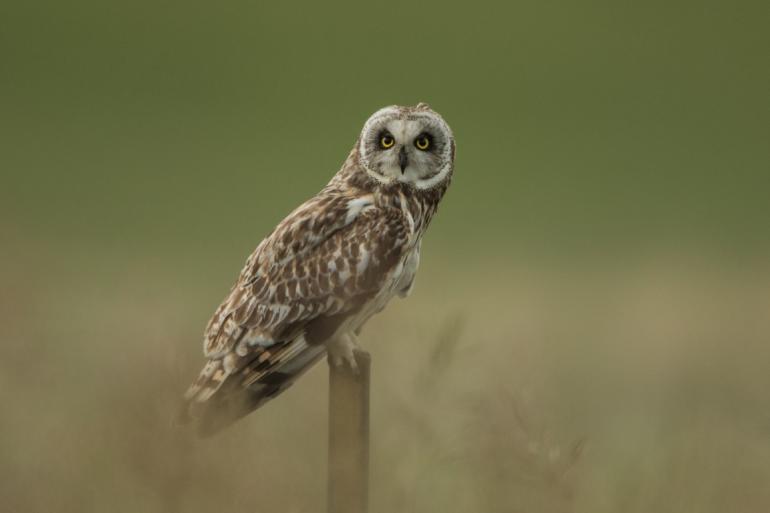
What is it about owls that intrigues us? Is it their brilliant yellow eyes and their bulky looking bodies? Maybe it’s their elusiveness, the fact that they’re not readily seen like other birds of prey. Photographing them and creating compositional impact is a tough challenge. Catchign the owls perched in a tree with mouths agape and branches hanging over their face is a photographer’s nightmare. Flight would be great if it’s not at night. But an owl perched on an old fence post, with soft, ethereal grasses rising to the talons, gives a more aesthetic photo.
Here are my key points:
• My positioning to my subject and according to the light
• Prepare my camera settings and lens BEFORE I approach the owl
• Not only do I look at the owl, but I note the fore and backgrounds
• Persistence with patience with my subject’s behaviors
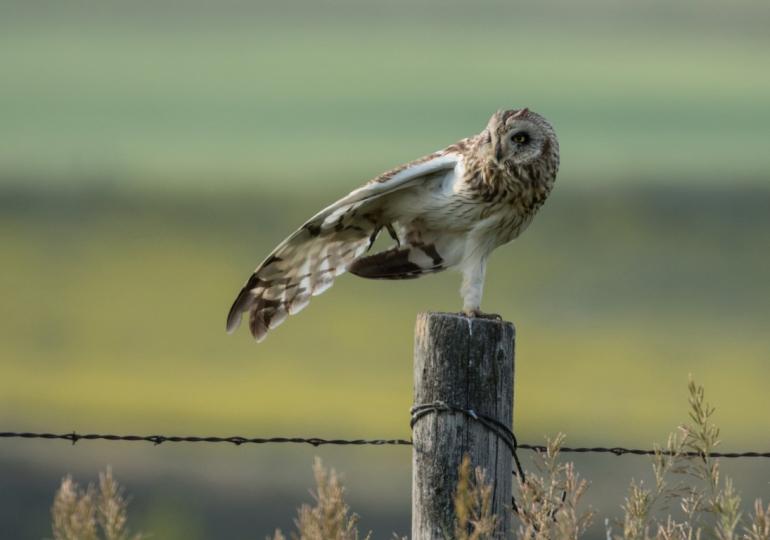
SHORT-EARED OWL
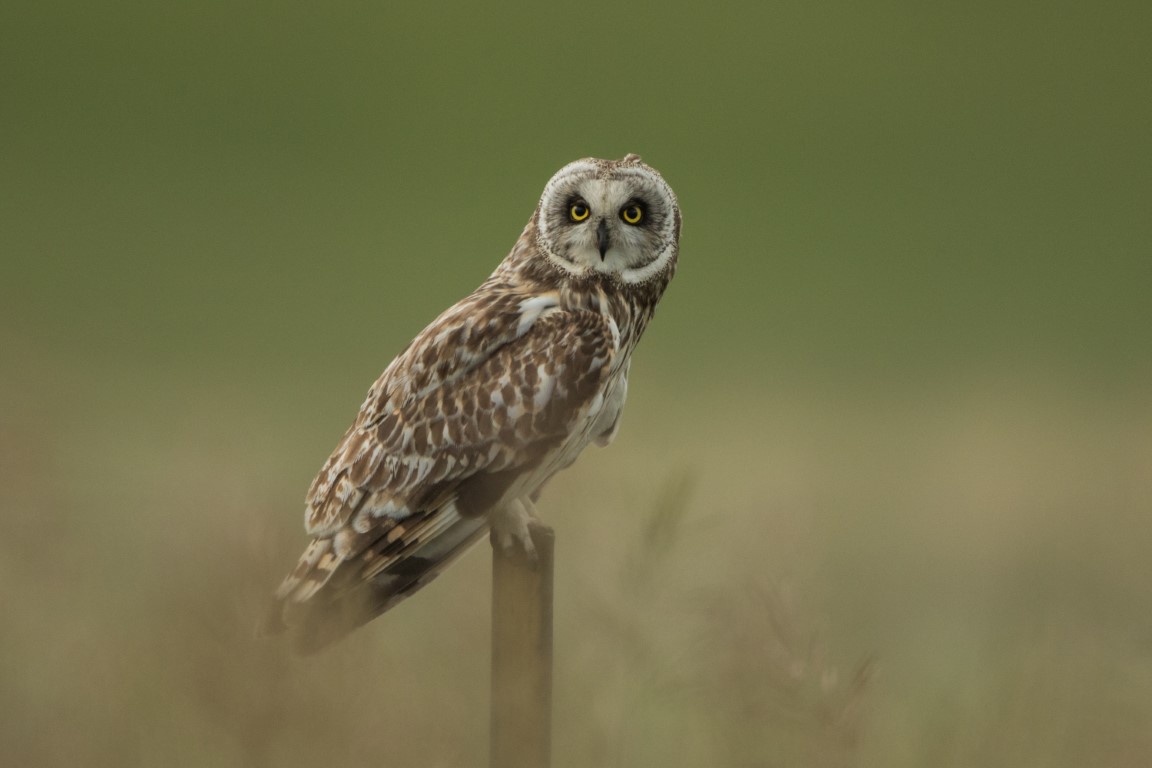 I saw my subject and quickly scanned the perimeter of the owl. The soft grasses with a wide open aperture setting of F5.6 gave me the soft foreground grasses and green palette in the background. I slowly approached within my car and parked at an angle so I could shoot without obstruction from my outside mirror. I’m using a 500mm lens with a 1.4 teleconverter so my distance is still about 20 yards away.
I saw my subject and quickly scanned the perimeter of the owl. The soft grasses with a wide open aperture setting of F5.6 gave me the soft foreground grasses and green palette in the background. I slowly approached within my car and parked at an angle so I could shoot without obstruction from my outside mirror. I’m using a 500mm lens with a 1.4 teleconverter so my distance is still about 20 yards away.
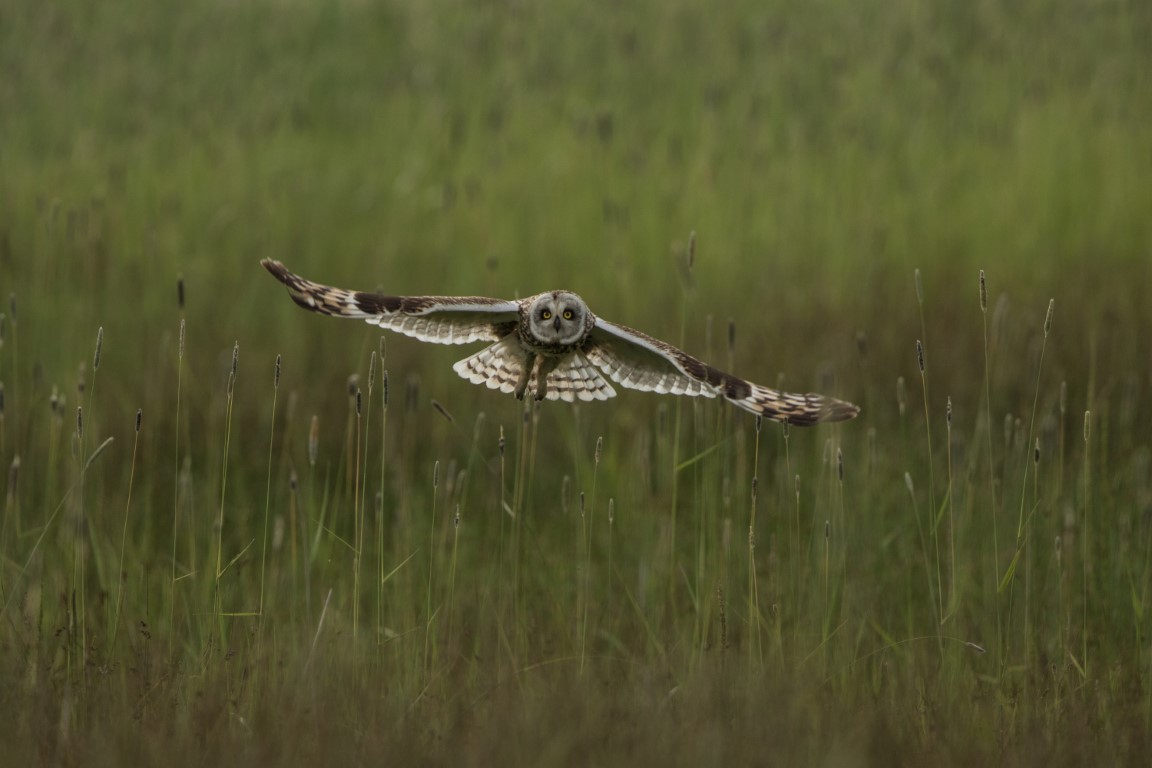 My subject creates interest by staring at something above and away. Watching your subject’s eyes is a clue into what else is in their surroundings, such as another raptor.
My subject creates interest by staring at something above and away. Watching your subject’s eyes is a clue into what else is in their surroundings, such as another raptor.
The emerald green grasses are a perfect background for illuminating my subject. Of course, the owl chose his own backdrop minus background homes, telephone wires, or fence posts.
Once again, here is the yoga stretch with complete balance, but this time, my foreground and backgrounds are in reverse with pronounced grasses and a colorful background palette.
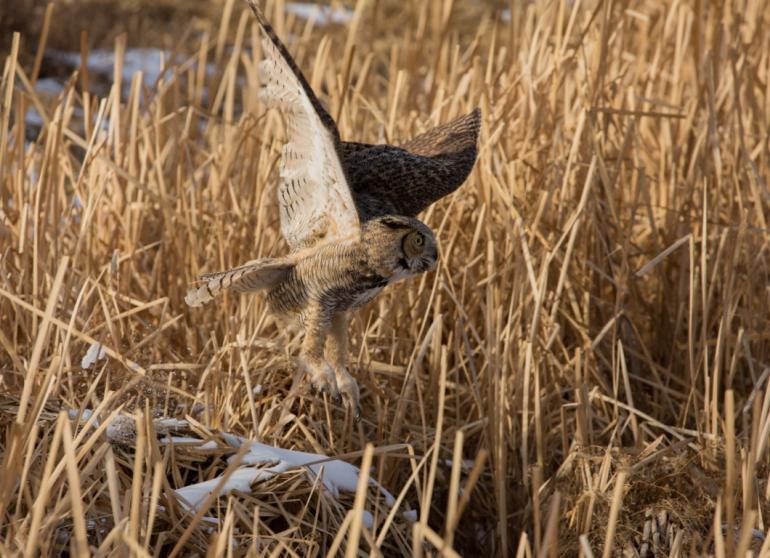
GREAT-HORNED OWL
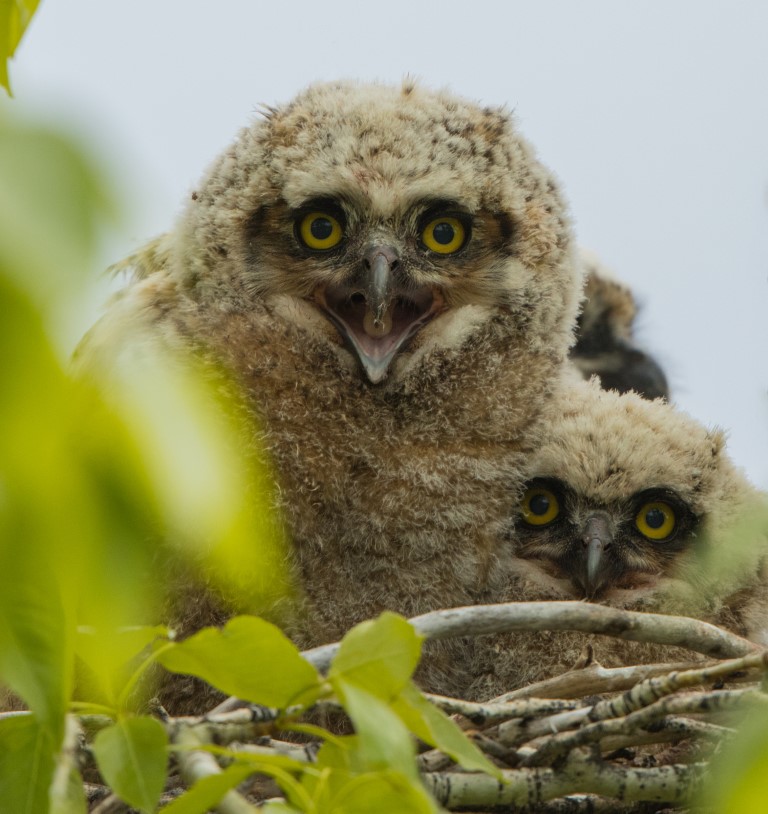 The Great Horned Owl likes to sit and be hidden. This is one of those photos with branches leaning in and taking up most of the photo. But, this is also one of those “animal antics” shots that show the owl content and relaxed within its home. Images that are personal in look and feel will capture your audience’s attention.
The Great Horned Owl likes to sit and be hidden. This is one of those photos with branches leaning in and taking up most of the photo. But, this is also one of those “animal antics” shots that show the owl content and relaxed within its home. Images that are personal in look and feel will capture your audience’s attention.
There is a minute window of capturing these two owlets in tight. The beak open with intense stare moves these two from the “cute and adorable” category to a sharp, reprimanding behavioral category.
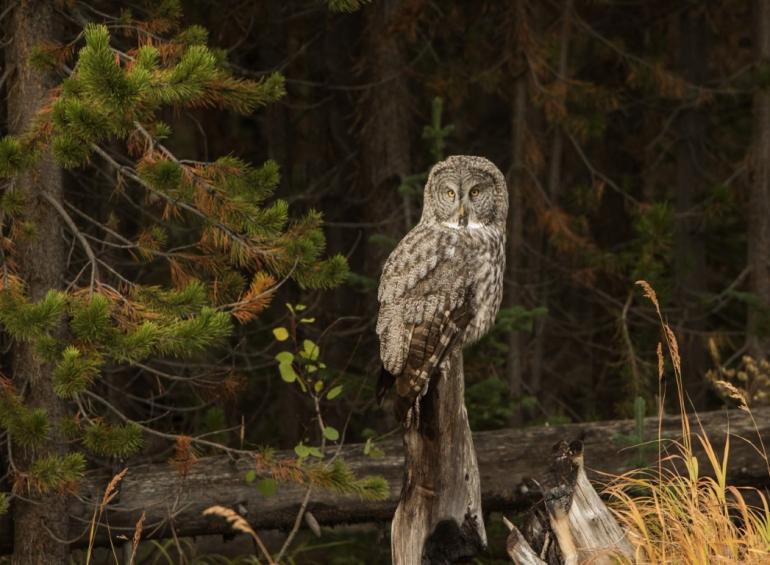
GREAT GRAY
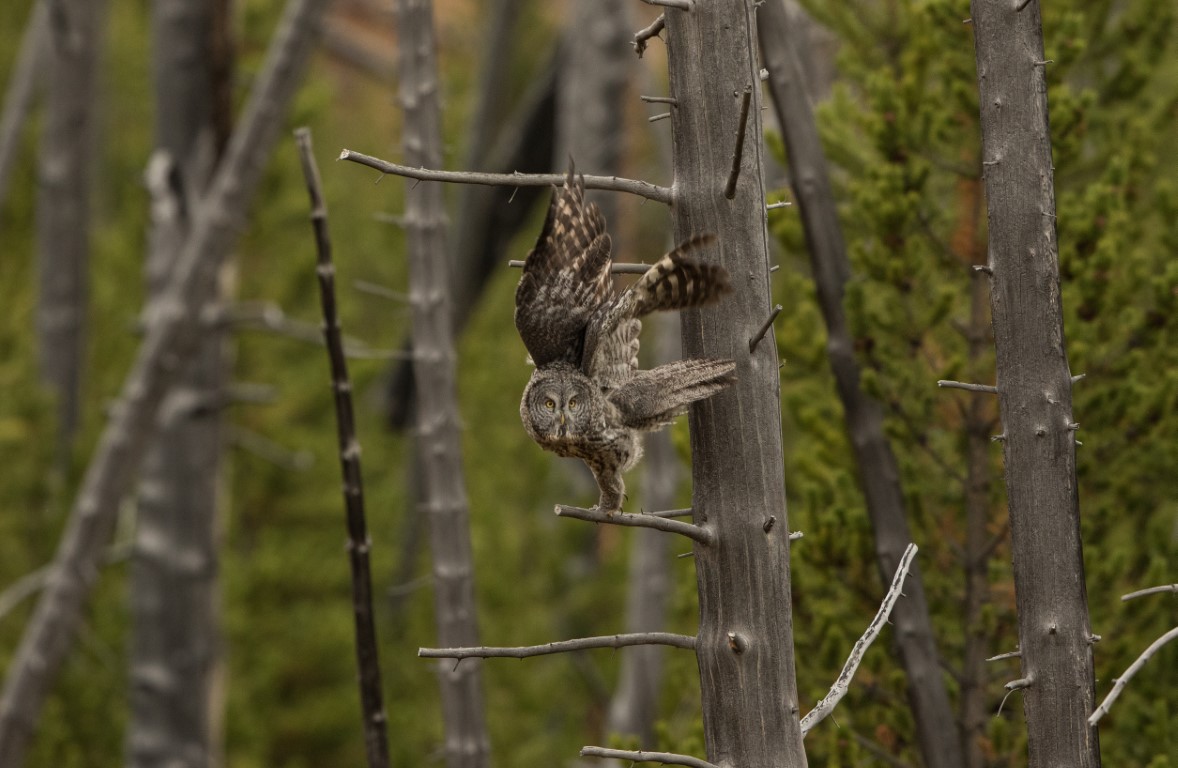 Excitement set in as I saw the Great Gray land in the forest. I steadily handheld my 500mm lens waiting for a behavior to ensue. In this series, you can see the cues it is giving me…from a sitting perch to a crouch and then upward wings, indicating flight is about to happen. He knew I was there, challenging me with my own big eye.
Excitement set in as I saw the Great Gray land in the forest. I steadily handheld my 500mm lens waiting for a behavior to ensue. In this series, you can see the cues it is giving me…from a sitting perch to a crouch and then upward wings, indicating flight is about to happen. He knew I was there, challenging me with my own big eye.
I released the shutter and locked onto the head and eyes. My shutter speed wasn't fast enough to stop the wing flap, but the head and eyes came out tack sharp, a necessity with wildlife photography!
After teasing me with its flight patterns, eventually it perched on a stump with the dark background against its light-colored feathers. A splash of color with yellow grasses helped to balance the entire photo as it leads the eye from the lower right hand corner to the pine needles in the upper left hand corner. With this balance, a natural framing of the subject occurs.
Look for a photo opportunity that goes beyond static with lines that help balance or frame the photo, a splash of color, placement of your subject within the frame and wild behaviors. Your photos will convey a more personal relationship between you and your subject.
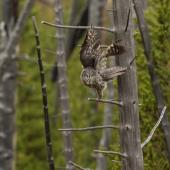
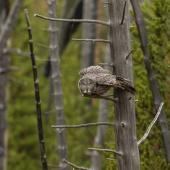
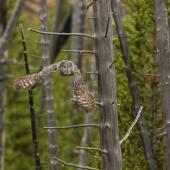
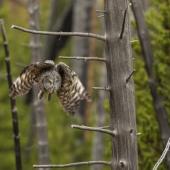
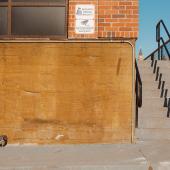
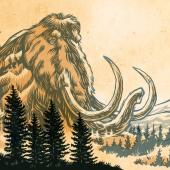
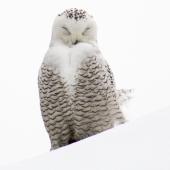
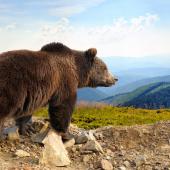
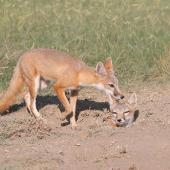
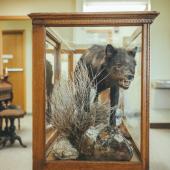
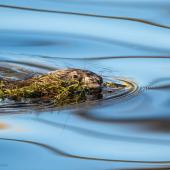
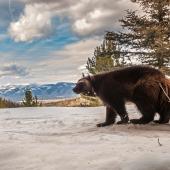
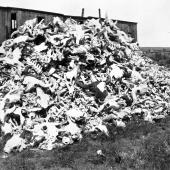
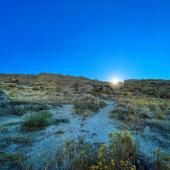
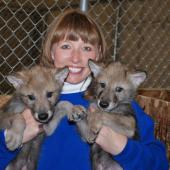
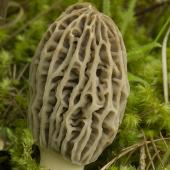
Leave a Comment Here